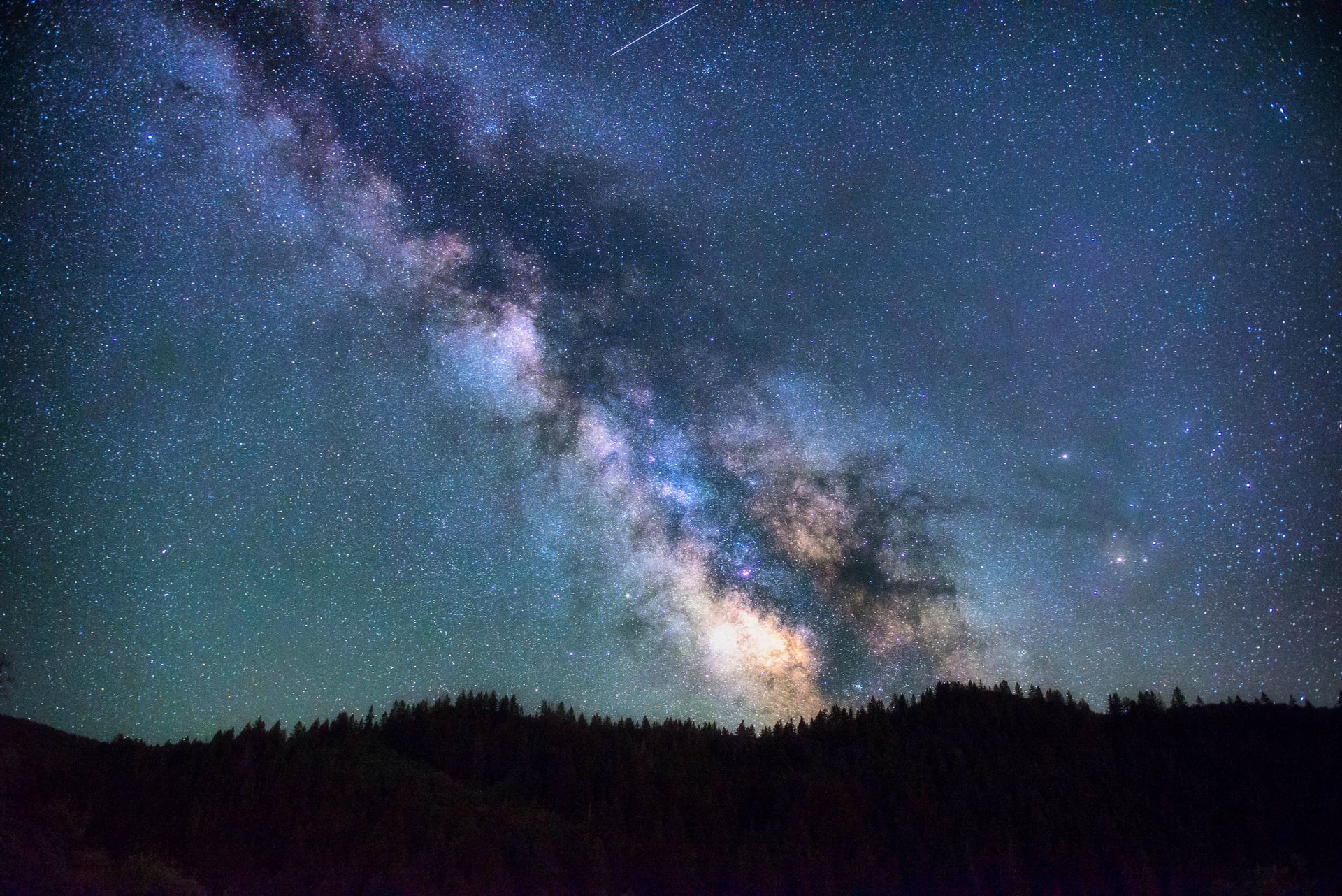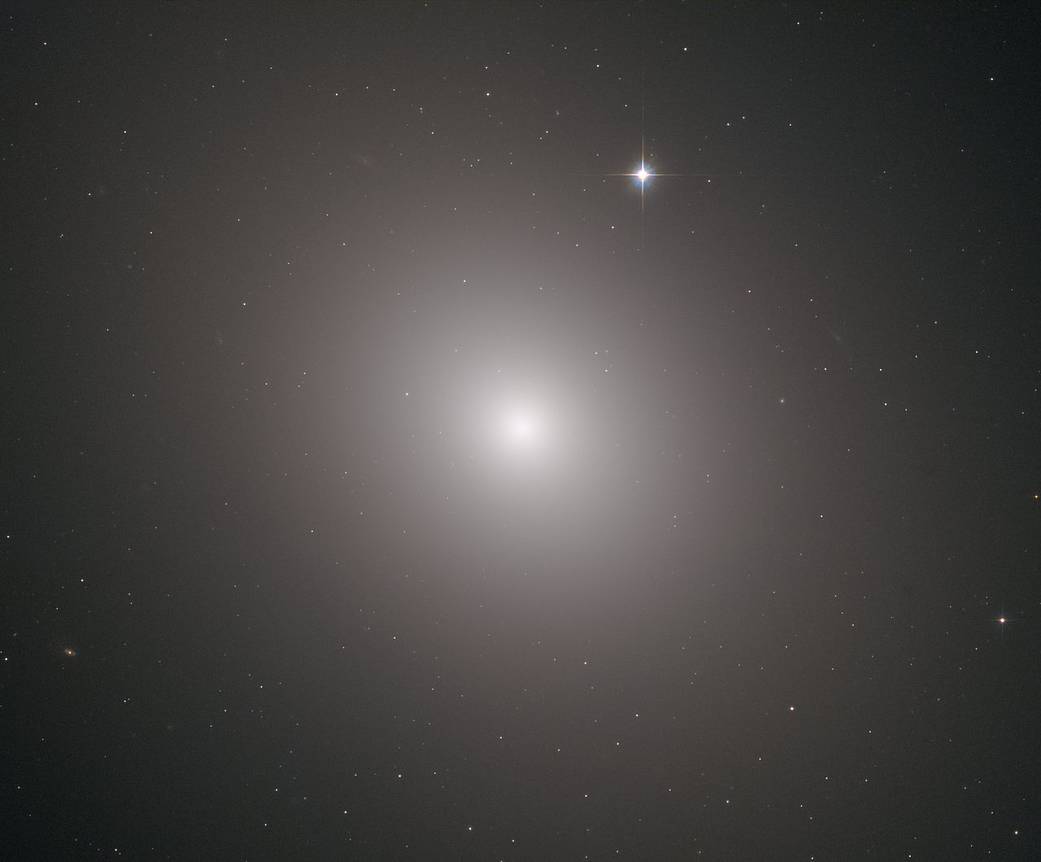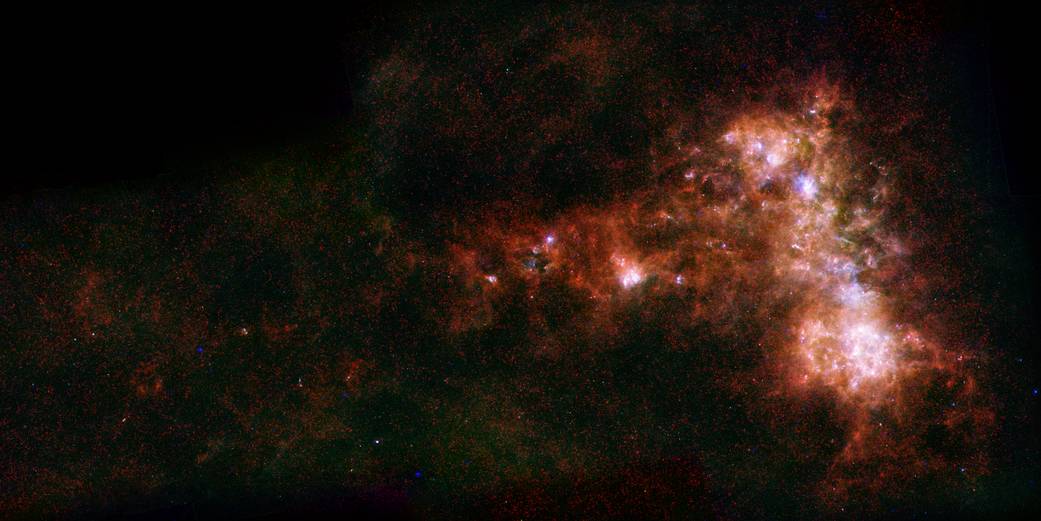The Different Types of Galaxies
Written by Ace | November 14th, 2020 | Science
Have you ever looked up to the night sky and observed a beautiful multi-colored streak dotted with countless stars and patches of pure blackness?
Then you’ve seen part of the Milky Way Galaxy, our resident galaxy.

The Milky Way Galaxy, as seen from Earth.
Galaxies are massive collections of stars, and can contain hundreds of thousands, billions, or even trillions of stars! They vary greatly in size, but even the smallest galaxies are thousands of light years across from end to end. In addition to stars, galaxies also contain gas and dust. They’re held together by strong gravity that keep all their contents rotating about a common center. Galaxies are beautiful to look at, truly spectacular sights to behold, and there are so many of them! In fact, the Milky Way is just one galaxy in a seemingly endless ocean of billions or trillions (depending on which source you choose to believe).
All the galaxies are unique (nature has quite the imagination), but we have been able to categorize the galaxies into three main groups based on their shapes and general contents. In today’s post, we’ll dive into the criteria we use to group galaxies, the characteristics of each type of galaxy, and just how awesome and mysterious galaxies truly are.
Let’s get started.
How We Group Galaxies
Galaxies are categorized by their general shape. However, each different type of galaxy also differs in their star, dust, and gas content. The three kinds of galaxies are spiral, elliptical, and irregular galaxies.
Type #1: Spiral Galaxies
Spiral galaxies are rotating disks with spiral “arms” that bulge outward from the center of the galaxy (hence their name). The center region is dense with material and bulges outward.
These galaxies differ in how “tightly wound” their arms are: some have their arms wound closer to the center; others are collected in a looser manner.
Generally, spiral galaxies have billions, and occasionally trillions, of stars. While they are the rarest kind of galaxy, they are large and bright, and can thus be spotted with relative ease. They contain large amounts of dust and gas, and generally host younger stars. Star formation is more active in them, which makes sense because they have lots of gas and dust.
About one-third of the spiral galaxies have their arms unwinding from a bar-like structure composed of gas, dust, and stars, rather than unwinding from the galactic nucleus. This structure is bright and passes through the galaxy’s center (a little bit like an ‘axis’). These kinds of galaxies are referred to as barred spirals, and are sometimes considered a separate galaxy category.
Great, now we know what spiral galaxies are. But do we know any specific spiral galaxies?
Most certainly.
Our own Milky Way is a spiral galaxy, and it contains billions of stars. Our solar system is located at the edge, on one of the arms spiralling outwards.

An artist’s conception of our Milky Way Galaxy. Courtesy of NASA.
Another spiral galaxy you’re probably familiar with is the Andromeda galaxy, our galactic neighbor. It’s actually much bigger than the Milky Way: it contains trillions of stars!
The Andromeda Galaxy (also known as M-31), our galactic neighbor. Courtesy of NASA.

Type #2: Elliptical Galaxies
Elliptical galaxies make up the majority. Unlike spiral galaxies, they don’t have arms spiraling outward; instead, they’re elliptical or egg-shaped, though they vary widely in size, as some are nearly spherical and others are considerably elongated. In fact, they’re classified based on the degree to which they’re flattened, with E0 representing the almost spherical galaxies and E7 representing the ones that are most flattened.
Also unlike spiral galaxies, ellipticals contain little to no gas and dust, and mainly harbor stars. The stars hosted are also, unlike those in spiral galaxies, older and more mature, and as such, tint these galaxies with a reddish to yellow glow.
Ellipticals aren’t usually very big, with some spanning only a few thousand light years. Many are smaller than spiral galaxies, and are termed “dwarf ellipticals,” containing only a few million stars. However, there are some ellipticals that are enormous, with over a trillion stars, totaling almost ten times the mass of our galaxy, though these are very rare.

This is an image of Messier 49 (M49), a massive elliptical galaxy. Courtesy of NASA.
Type #3: Irregular Galaxies
So we’ve seen galaxies with spiraling arms and elliptical galaxies, and both seem to have a kind of symmetry to them. But can there be galaxies without symmetry? Just like there are asymmetrical organisms on Earth (sponges), there are asymmetrical galaxies in our Universe. These belong to the group of “irregular galaxies.” The group generally includes galaxies that do not belong to either of the two types listed above. Many irregulars actually used to be spirals or ellipticals, but were then distorted by gravitational attraction to a bigger galaxy or a collision with another galaxy.
Irregular galaxies are typically small. Most dwarf galaxies (those containing a few million to a few billion stars) happen to be irregular galaxies, although there are dwarf ellipticals and dwarf spirals.
Dwarf galaxies are the most common kind of galaxy, but they are often outshined by the bigger galaxies.
The Milky Way galaxy has two irregulars next to it: the Big Magellanic Cloud and the Small Magellanic Cloud, which can both only be seen from southern latitudes.

The Small Magellanic Cloud (above) is shown in infrared. The picture to the right captures a portion of the Large Magellanic Cloud.
The Magellanic Clouds, courtesy of NASA.

The Secret Inside A Galaxy
I mentioned earlier that the contents of a galaxy rotate around a common center. If you’re curious, you might be wondering what that common center is. What could be so strong gravitationally that it pulls together light years’ worth of material around it?
The answer is something possibly cooler than the galaxy itself: a supermassive black hole. These are black holes that are so big, they’re dubbed ‘supermassive.’ If you know anything about black holes, you’ll know that they have a gravitational pull that’s so strong, not even light can escape it. If small black holes are so powerful, how strong would a supermassive one be? Well, strong enough to hold together the massive trillion-star galaxies!
Astronomers widely believe that there is a supermassive black hole at the center of pretty much every big galaxy. They can also be found in quasars, possibly explaining why they are so energetic.
Hold up: if large galaxies have a supermassive black hole at their center, does it mean that the Milky Way also has one?
The answer is a resounding yes! Astronomers have identified the black hole at the center of our galaxy – the black hole Sagittarius A* (Sgr A*).
According to NASA, it’s located 26,000 light years from Earth, and it’s about 4 million times the mass of the Sun. (To put that into perspective, the Sun’s mass is equivalent to that of over 330,000 Earths combined!)

Sgr A*, courtesy of NASA.
Conclusion
We’ve explored quite a bit about galaxies! We considered at the beginning what a galaxy is, as well as its main components, and then we discovered that galaxies are grouped in one of three categories: spiral, elliptical, or irregular. We also took a deeper dive into the center of the big galaxies, only to discover that galaxies contain epic secrets within them known as supermassive black holes. While we know some important characteristics of galaxies, there are still many things we don’t know – and that makes galaxies even cooler than they already are. Wouldn’t you agree?
Sources
Information
- “Galaxies (CK12.org)”: https://www.ck12.org/c/earth-science/galaxies/lesson/Galaxies-MS-ES/?referrer=concept_details
- “Galaxy”: https://go.scholastic.com/D/article/a20/417/a2041770-h.html?highlightTerm=types%2520AND%2520of%2520AND%2520galaxies
- “Galaxy” (More In-Depth): https://go.scholastic.com/L/article/016/963/0169630-00.html?highlightTerm=types%20AND%20of%20AND%20galaxies
- “Black Holes” (NASA): https://science.nasa.gov/astrophysics/focus-areas/black-holes#:~:text=Astronomers%20believe%20that%20supermassive%20black,on%20nearby%20stars%20and%20gas
- “Black Hole”: https://go.scholastic.com/L/article/004/918/0049180-00.html?highlightTerm=black%20AND%20hole
- “Our Sun” (NASA): https://solarsystem.nasa.gov/solar-system/sun/in-depth/
- “This Is How We Know There Are Two Trillion Galaxies In The Universe”: https://www.forbes.com/sites/startswithabang/2018/10/18/this-is-how-we-know-there-are-two-trillion-galaxies-in-the-universe/#3c2f685e5a67
Images
- “Supermassive Black Hole Sagitarrius A*” (Sgr A*): https://www.nasa.gov/mission_pages/chandra/multimedia/black-hole-SagittariusA.html
- “Star Formation in Dwarf Galaxy” (Small Magellanic Cloud): https://www.nasa.gov/multimedia/imagegallery/image_feature_2323.html
- “Hubble Peers into the Storm” (Large Magellanic Cloud): https://www.nasa.gov/image-feature/goddard/2016/hubble-peers-into-the-storm
- “Hubble Captures the Brilliant Heart of a Massive Galaxy” (M49): https://www.nasa.gov/image-feature/hubble-captures-the-brilliant-heart-of-a-massive-galaxy
- “Andromeda Galaxy” (M-31): https://www.nasa.gov/topics/solarsystem/features/watchtheskies/andromeda-galaxy.html
- “Milky Way Galaxy”: https://www.nasa.gov/mission_pages/GLAST/science/milky_way_galaxy.html
New to Pearson Online Academy? Learn More Here.
